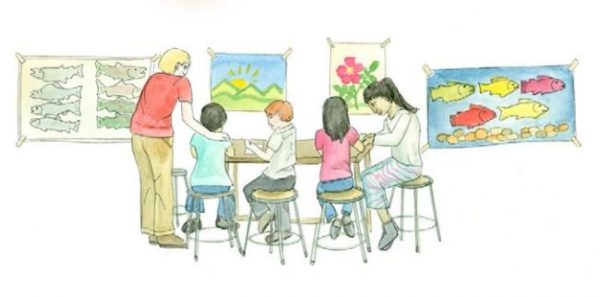
In January, the state put out a new resource designed to help schools support students who have experienced trauma. “Transforming Schools” recommends practices such as embracing culture in the classroom and teaching students how to calm themselves down when they get upset.
Educators are hoping the resource can help schools can do a better job meeting the needs of Alaskan students.
Two out of three Alaskan adults have experienced childhood trauma. That’s according to the Alaska Division of Public Health. And trauma can get in the way of learning.
“A student can’t walk through the door and forget everything that happened to him before he walked through that door, whether he didn’t have breakfast, mom and dad were fighting, different things like that,” said Sharon Fishel, education specialist at the Alaska Department of Education & Early Development.
Fishel said thinking about trauma in schools is not new in Alaska: “Everybody wanted to do trauma-informed, trauma-sensitive, trauma-engaged schools, but they were all recreating the wheel.”
So, with the Association of Alaska School Boards and half a dozen other partners, Fishel’s department set out to create the wheel: a way that schools can help children who have experienced major life stressors or traumatic events. That includes what students experience firsthand, as well as the ongoing impacts of historic events, like the way colonialism worked through the educational system in Alaska. Damage is still unfolding from practices that include the forced removal of Alaska Native children from their homes, the boarding school system and oppression of Alaska Native languages and culture.
Today, Fishel said engaging with trauma in schools is about shifting the mindset from “what’s wrong with you?” to “what’s happened to you?”
The new resource contains 11 chapters full of stories and best practices, created with input from over 200 teachers, counselors and community members across the state. Fishel said schools can pick and choose and use them in any order — but there is a logic to starting at the beginning: The first chapter explores the brain science of trauma, drawing on research that shows extreme stress can actually disrupt healthy brain development.
Catherine Mendenhall said she can see that in her classroom. She’s been a teacher in Alaska for 18 years, both on and off the road system.
Mendenhall said schools set lofty goals for their students — and face pressure to meet them — but emotional needs have to come first.
“If we’re wanting students to learn math and science and how to read, and they are stuck in fight-or-flight mode, they’re not going to be able to use all of their mind to learn, because so much of it is tied up in wondering whether they’re safe,” Mendenhall said.
The new state resource emphasizes a team approach to helping students deal with trauma.
Mendenhall said this is already working at her school. Parents, teachers, specialists — even the school principal is involved.
But for a lot of schools, building teams to address students’ emotional needs will mean hiring more people or asking staff to do more with less. And without a major priority shift, Mendenhall is not optimistic about the future of school funding in Alaska. She said we’ll get what we pay for.
“Unless we have more mental health help, more counselors, more people who are experienced in helping these students through their trauma, schools are not going to succeed, because the students aren’t gonna be able to do the tasks we expect them to do,” Mendenhall said.
Last week, Gov. Michael Dunleavy’s administration proposed doing away with $20 million of public school funding that the Alaska Legislature had agreed to in the last budget. His plan for the state’s next budget — and any future changes to education spending — will be released Feb. 13.




